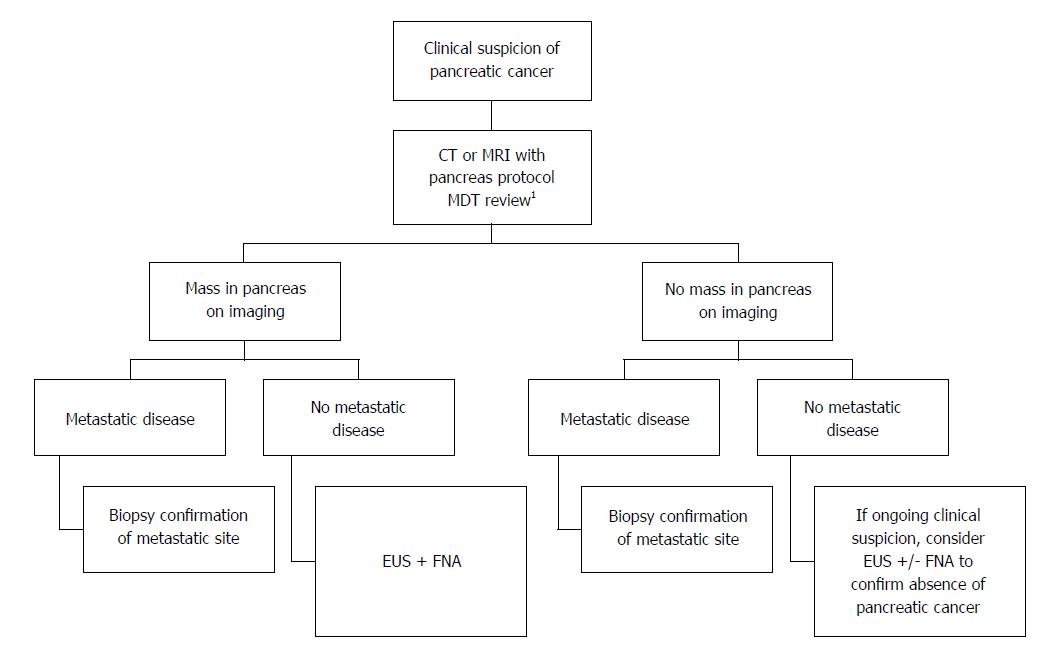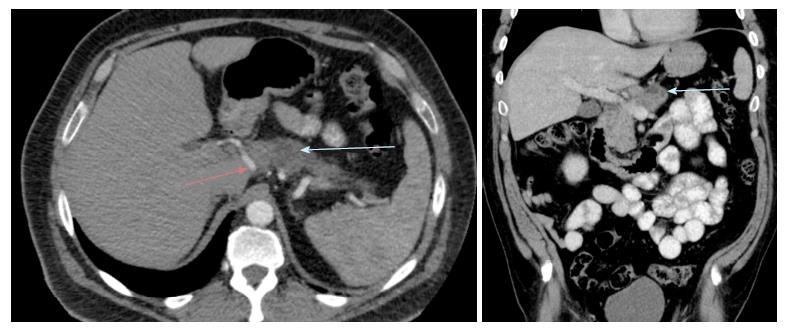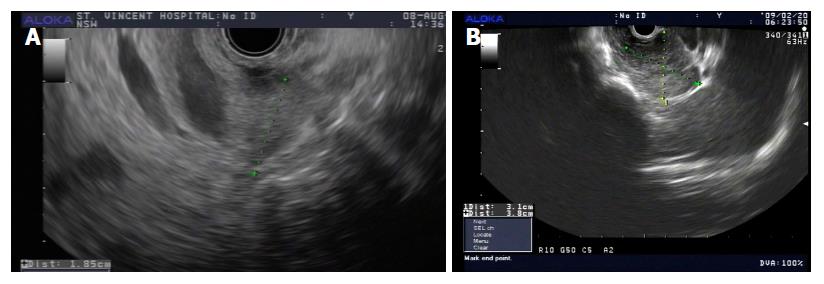Copyright
©The Author(s) 2018.
World J Gastroenterol. May 21, 2018; 24(19): 2047-2060
Published online May 21, 2018. doi: 10.3748/wjg.v24.i19.2047
Published online May 21, 2018. doi: 10.3748/wjg.v24.i19.2047
Figure 1 Algorithm for the evaluation of a patient that has clinical suspicion of pancreatic cancer.
1Multi-disciplinary review should involve a panel including gastroenterologist, surgeon, medical and or radiation oncologist, diagnostic imaging and pathologist. CT: Computed tomography; MDCT: Multi-detector computed tomography; MRI: Magnetic resonance imaging; EUS: Endoscopic ultrasound; FNA: Fine needle aspiration.
Figure 2 Axial and coronal plane view on computed tomography of a patient with a 2 cm mass in the body of pancreas (blue arrow), abutting splenic artery (red arrow).
Figure 3 Multimodal imaging techniques utilised for a patient with 2.
8 cm head of pancreas cancer (blue arrow) with portal vein and superior mesenteric vein invasion. A: Hypodense mass on coronal view on CT; B: T1-weighted coronal view on MRI; C: T1-weighted axial view on MRI; D: MRCP view with dilated CBD and PD (double duct sign); E: Axial view on PET CT imaging showing marked FDG avidity. CT: Computed tomography; MDCT: Multi-detector computed tomography; MRI: Magnetic resonance imaging; PET: Positron emission tomography; MRCP: Magnetic resonance cholangiopancreatography; FDG: Fluorodeoxyglucose.
Figure 4 Endoscopic ultrasound images of (A) a small pancreatic adenocarcinoma in the head of the pancreas (1.
8 cm) not seen on other modalities; and (B) a 3.1 cm pancreatic adenocarcinoma in the tail of the pancreas.
Figure 5 Multimodal imaging techniques demonstrating autoimmune pancreatitis in a patient.
A: Diffuse enlargement “sausage shape” of the tail axial view on CT; B: Head of the pancreas axial view in arterial phase on MRI; C: Tail of the pancreas T1-weighted axial view on MRI; D: Homogenous restricted diffusion on DWI axial view MRI. CT: Computed tomography; MRI: Magnetic resonance imaging; DWI: Diffusion-weighted imaging.
- Citation: Zhang L, Sanagapalli S, Stoita A. Challenges in diagnosis of pancreatic cancer. World J Gastroenterol 2018; 24(19): 2047-2060
- URL: https://www.wjgnet.com/1007-9327/full/v24/i19/2047.htm
- DOI: https://dx.doi.org/10.3748/wjg.v24.i19.2047













